Pamukkale or Cappadocia, Turkiye…which is the right destination for you? I have been to both in the last year and made this comparison guide of Cappadocia and Pamukkale so you can see which one best suits your travel goals.
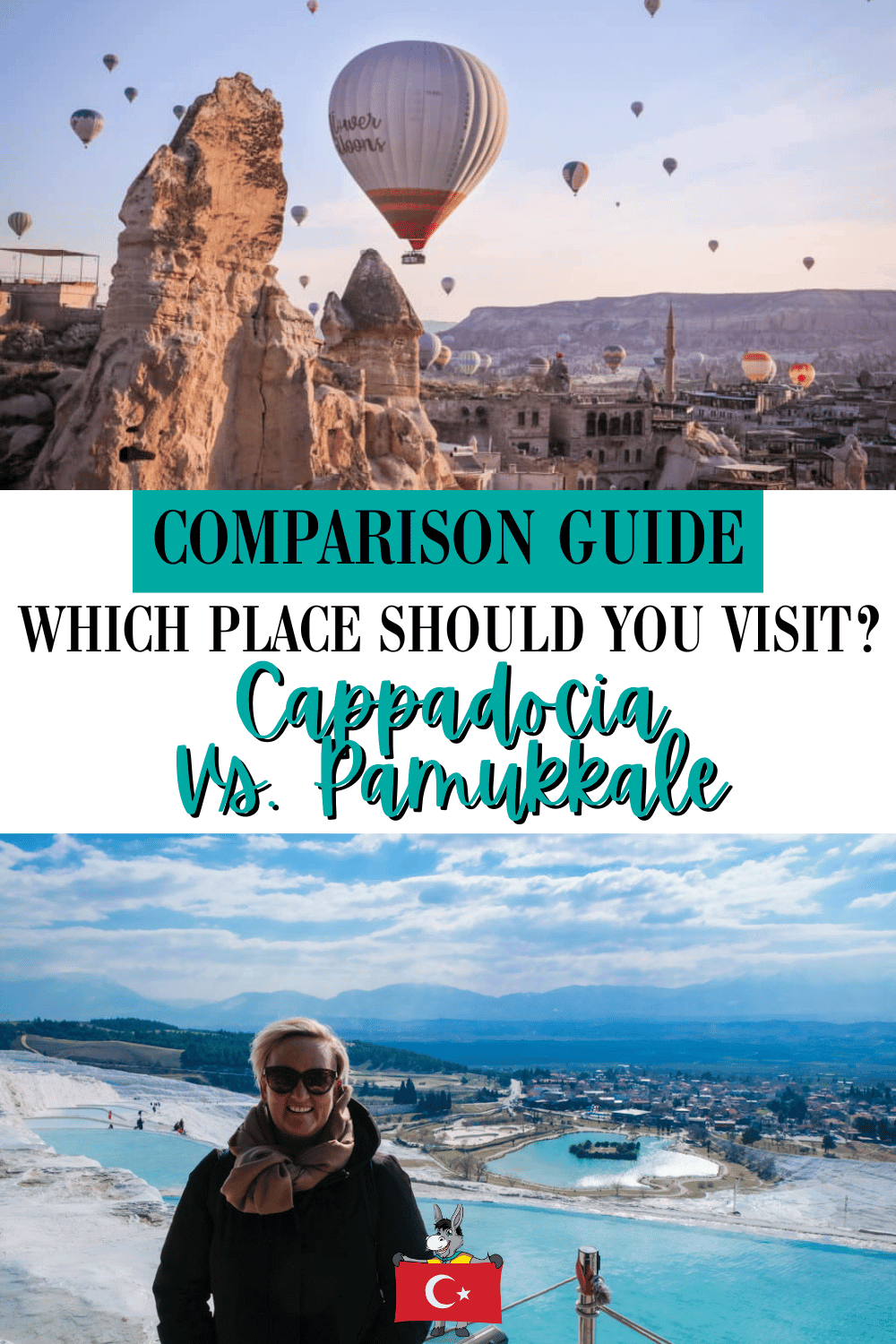
The world is huge and packed with so many things to see and do. Of course, we all want to see everything and tick off our bucket list items, but time is not always on our side!
For that reason, sometimes we need to prioritize a place over another on one occasion and then visit the other place later.
It’s normal. Yes, it isn’t very pleasant, but it’s normal.
If you’re currently trying to decide between Pamukkale and Cappadocia in Turkey, I feel your pain. These are two unique places that everyone should see, but they’re also quite far away from one another, and while it’s possible to travel between them, maybe you don’t have the time.
In that case, why not choose one this time and visit the other later? But of course, that choice might not be easy.
For that reason, I’ve put together this handy guide to help you choose whether Pamukkale or Cappadocia is the destination for you right now.
Skip Ahead To My Advice Here!
Understanding The Size Of Turkey
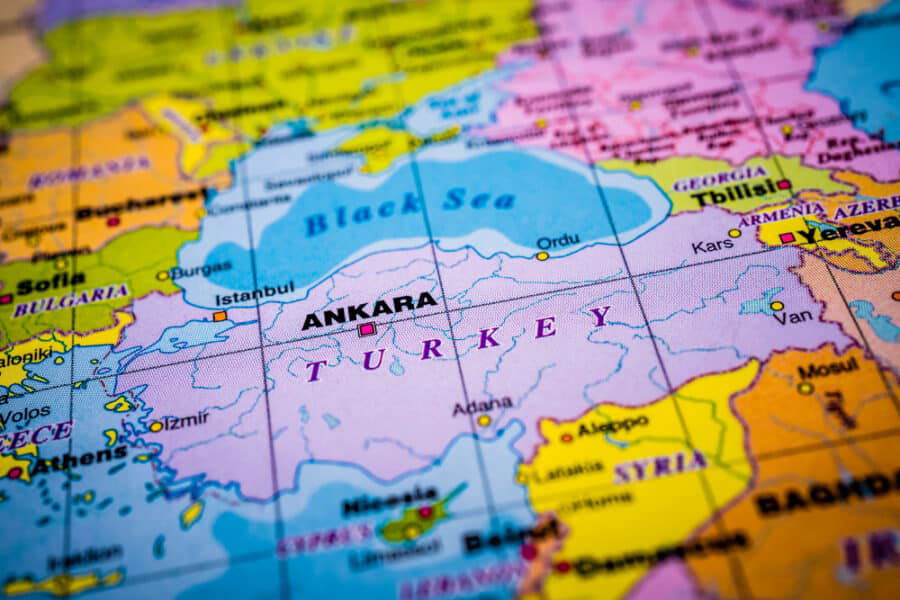
You’re probably going to want to cram as much as possible into your visit, but let me give you a piece of advice: if you want to enjoy your time and not be totally exhausted, pace yourself.
Turkey will be there for you another time; you don’t need to see everything in one go, and it’s kind of impossible anyway!
One of the biggest mistakes people make when exploring Turkiye is trying to do too much in a short time frame.
If you’ve ever wondered just how large Turkey is, prepare to be astounded! With an area of approximately 783,356 square kilometers (302,455 square miles), Turkey is a vast and sprawling country that stretches across two continents, bridging Europe and Asia.
As you can see, exploring this vast country requires some planning.
To truly grasp Turkey’s size, it’s important to understand the distances between its main towns, cities, and popular resorts. For instance, Istanbul is approximately 535 kilometers (332 miles) away from the iconic Cappadocia region.
Similarly, the coastal haven of Antalya, known for its stunning beaches, lies around 350 kilometers (217 miles) from the serene city of Pamukkale, where you can bathe in thermal waters.
And we all know how tiring travel is, even if it’s just a 2-hour domestic flight. That’s why it’s important to prioritize the things you want to see and do rather than try to tick a million boxes at once.
Best Time To Visit Cappadocia And Pamukkale
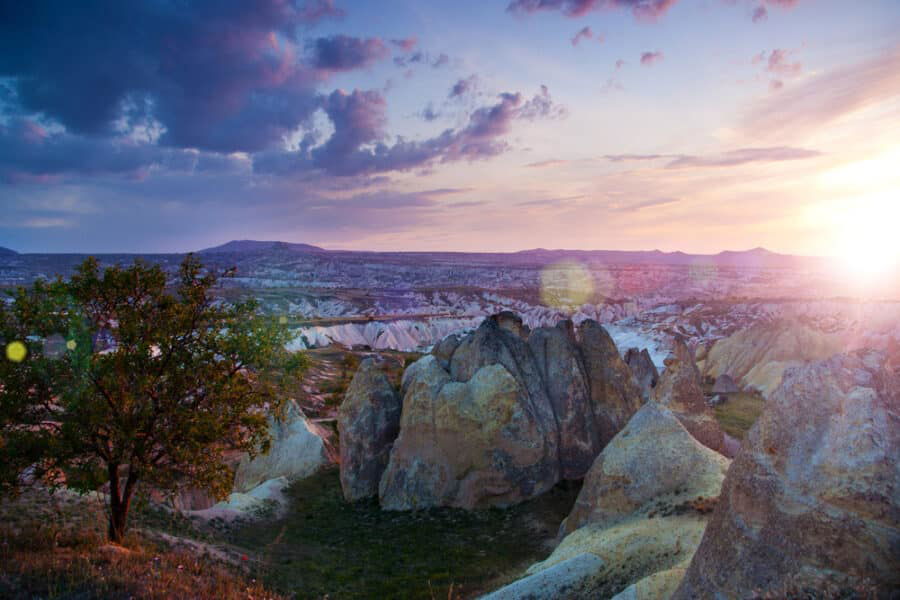
Both Cappadocia and Pamukkale are open all year round, but unsurprisingly, there are good times to go and some not-so-good times.
Personally, I don’t think there is a bad time, but if you want to avoid crowds and hot or cold weather or you don’t want your hot air balloon ride canceled, you need to know the details.
Vacation In Cappadocia

There’s no denying that Cappadocia is a sight to behold all year round. However, if you want to make the most of your trip, I recommend visiting Cappadocia in the spring (April to June) or fall (September to November).
During these seasons, the weather is pleasantly mild, and you’ll enjoy comfortable temperatures for exploring and taking part in outdoor activities. In the winter months, bad weather can sometimes cancel hot air balloon rides at short notice, and you may end up being very disappointed.
Spring brings the stunning blossoming of fruit trees and flowers, adding a vibrant touch to the already magical landscapes.
Sall, on the other hand, offers an extraordinary display of warm hues as the leaves change colors. Both seasons offer excellent opportunities for hiking, hot air ballooning, and exploring the unique cave dwellings in Cappadocia.
The Attraction Of Pamukkale
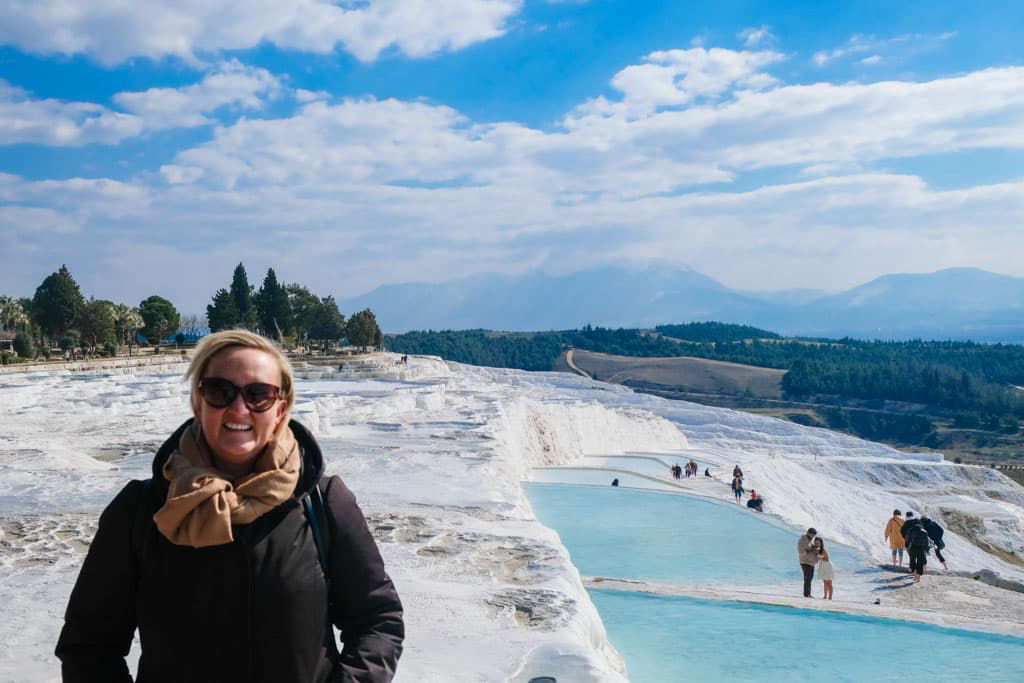
Now, let’s talk about Pamukkale.
When planning your visit, keep in mind that Pamukkale experiences hot summers and relatively mild winters. The best time to visit is during the spring and the fall months when the weather is not too hot, making it more comfortable to walk barefoot on the travertine terraces.
Springtime in Pamukkale (approximately mid-March to May) brings lush greenery and a sense of tranquillity as the area is less crowded. Fall (September to November) offers similar advantages, with the added bonus of a lesser chance of rain compared to spring. Wandering through the cascading pools of Pamukkale during these seasons truly feels like stepping into a fairy tale.
A word of advice: if you’re not into crowds, avoid June to the end of August like the plague! I took my family there in February, and we loved it being not so packed.
Visiting Pamukkale

Pamukkale, located in southwestern Turkey, close to the city of Denizli, is a captivating natural wonder that is a must-visit destination.
Translated as “Cotton Castle,” Pamukkale gets its name from the white terraces that resemble cascading cotton-filled pools created over thousands of years by the rich mineral deposits found in the region’s thermal waters.
These terraces, which are formed by the build-up of calcium carbonate, are indeed a sight to behold. The dazzling white landscapes against the backdrop of lush greenery are straight out of a dream, making Pamukkale a photographer’s paradise.
Pamukkale is also home to the ancient city of Hierapolis, a UNESCO World Heritage Site that is an amazing spot to explore. Check out the well-preserved ruins, which date back to the Hellenistic period, and immerse yourself in the area’s rich cultural heritage.
From the grand theatre to the impressive necropolis, every corner of Hierapolis tells a story. Additionally, visitors can relax in the thermal waters of Cleopatra’s Pool, where rumors suggest the Egyptian queen herself once bathed. Pamukkale offers a serene escape that seamlessly combines natural splendor with captivating history.
Pros And Cons Of Visiting Pamukkale
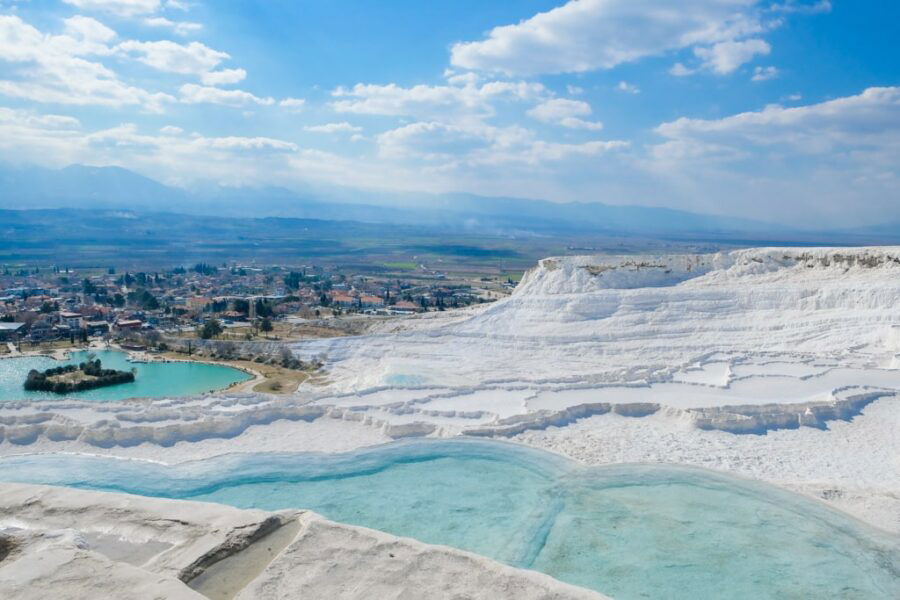
Pros of Pammukale
Natural beauty
Pamukkale’s main attraction is its surreal travertine terraces, created by calcium-rich mineral deposits. Wading through the crystal-clear pools while treading on the soft limestone feels like floating on clouds.
Hierapolis Ancient City
Within the Pamukkale site lies the ancient Roman city of Hierapolis. Discover well-preserved ruins, including a theatre, necropolis, and fascinating historical artifacts.
Thermal pools
Pamukkale’s warm thermal waters are believed to have healing properties. Visitors can relax in these natural hot tubs while enjoying stunning panoramic views of the surrounding landscape.
UNESCO World Heritage Site
As a UNESCO World Heritage Site, Pamukkale benefits from conservation efforts, ensuring that its natural and historical significance is protected for future generations.
Cultural immersion: Experience the friendly local culture, taste authentic Turkish cuisine, and explore the vibrant markets of the nearby town of Denizli.
Cons Of Pammukale
Crowds
Pamukkale’s popularity means that it can get quite crowded, especially during peak tourist seasons. Arriving early in the day or visiting during shoulder seasons can help you get around this problem.
Limited swimming access
Visitors are no longer allowed to swim in the terraces, but designated pools are provided for a more controlled experience.
Accessibility
The rugged terraces may be challenging for those with mobility issues. However, there are accessible pathways around the site for easier navigation. I’d also recommend wearing sea shoes, as the rocks can be very slippery.
Water temperature
The thermal water temperature can vary throughout the year, so it’s best to check before your visit to ensure it aligns with your preferences.
Brands We Use And Trust
Top Things To See And Do In Pamukkale
Explore The Terraces
Begin your journey by wandering through the otherworldly travertine terraces. Capture stunning photos, indulge in a barefoot walk, and immerse yourself in the unique texture and beauty of this natural phenomenon.
Visit Hierapolis Ancient City
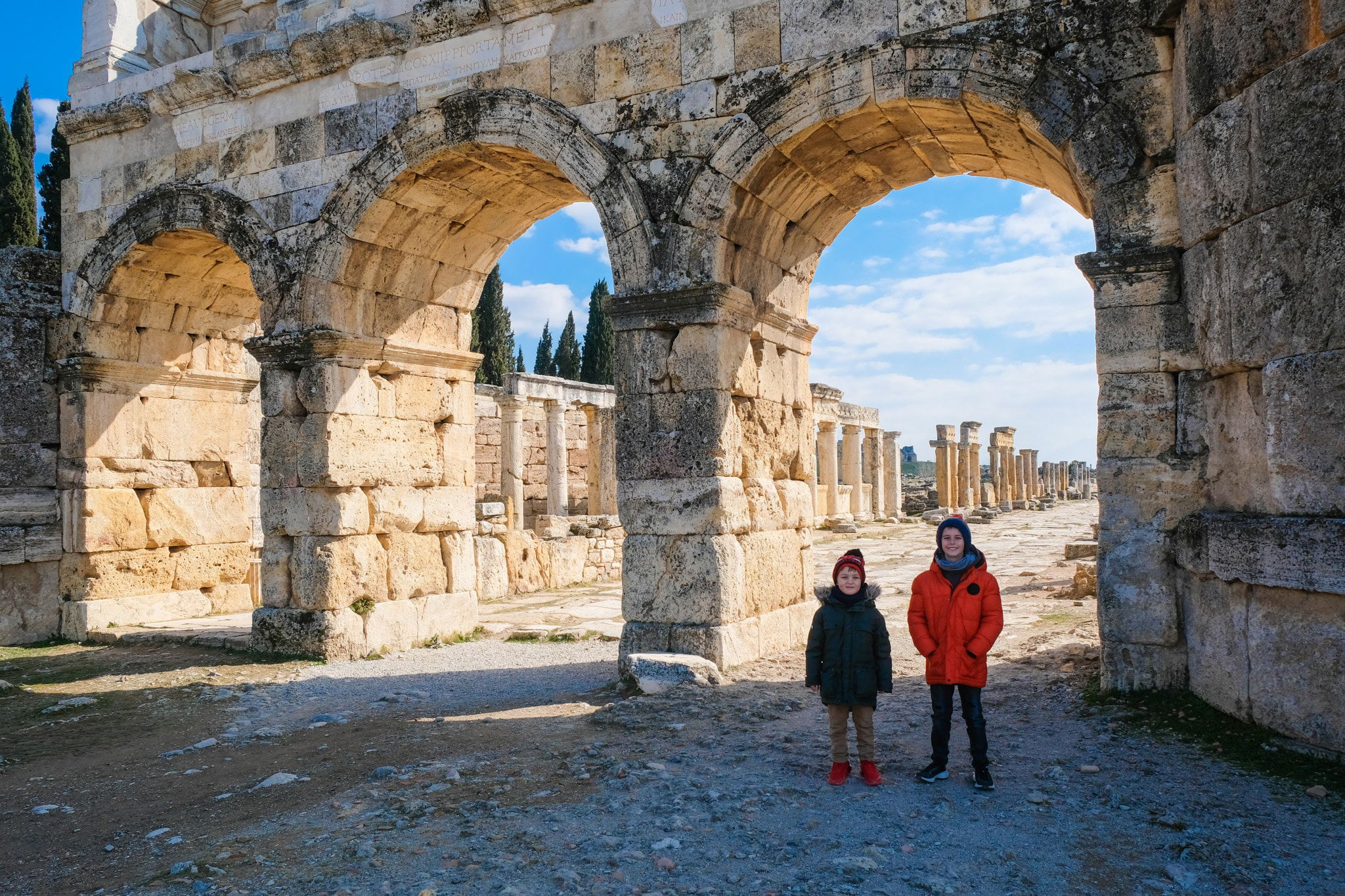 Step back in time and explore the ruins of ancient Hierapolis. Marvel at the well-preserved theatre, Roman baths, and the captivating Necropolis, where thousands of tombs stand against the hillside.
Step back in time and explore the ruins of ancient Hierapolis. Marvel at the well-preserved theatre, Roman baths, and the captivating Necropolis, where thousands of tombs stand against the hillside.
So many people miss out on the historical side of Pamukkale and focus on nature instead, but that is a big mistake! Definitely take your time exploring this part of the site.
Relax In Cleopatra’s Pool
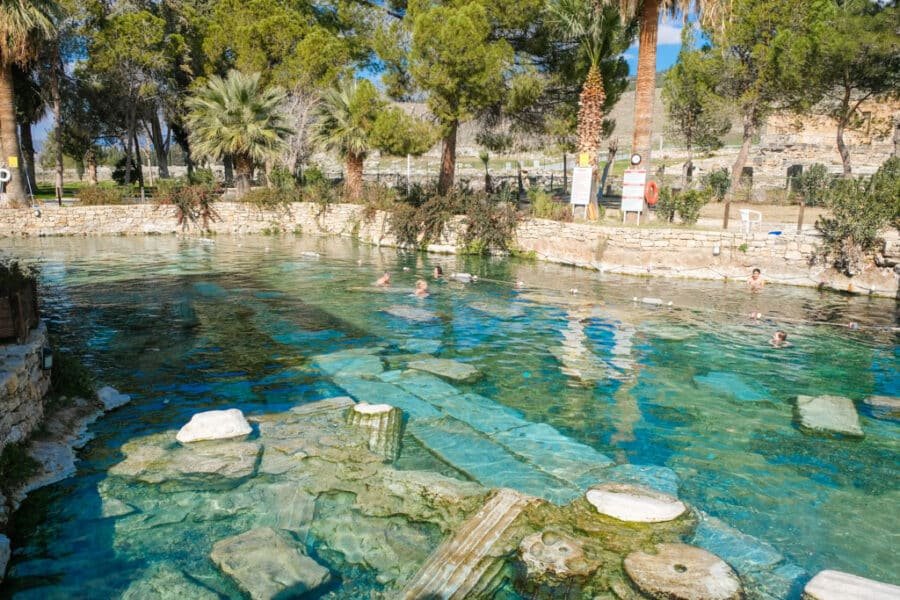 Located within the Hierapolis ruins, Cleopatra’s Pool is a thermal pool believed to have been frequented by Cleopatra herself. Take a dip and soak in the rich historical ambiance.
Located within the Hierapolis ruins, Cleopatra’s Pool is a thermal pool believed to have been frequented by Cleopatra herself. Take a dip and soak in the rich historical ambiance.
Pamukkale Museum: Discover the fascinating history and artifacts of the region at the Pamukkale Hierapolis Archaeology Museum. Explore exhibits showcasing the ancient civilizations that once thrived in this area.
Enjoy The Scenic Views From Karahayit
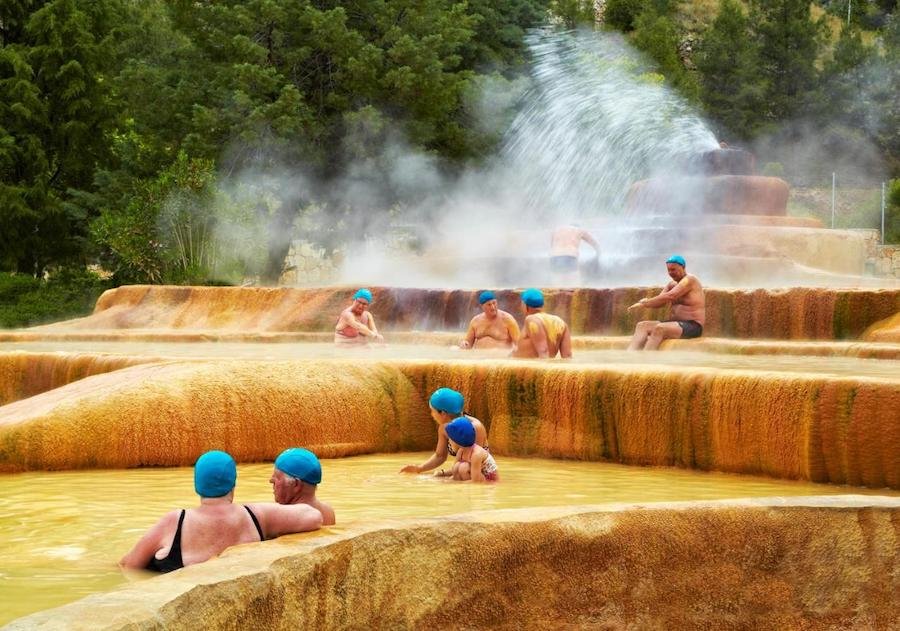
Just a short distance away from Pamukkale lies Karahayit, a small village celebrated for its red-colored thermal waters. Take in the remarkable landscapes and rejuvenate with a visit to one of the local spas.
How To Get To Pamukkale
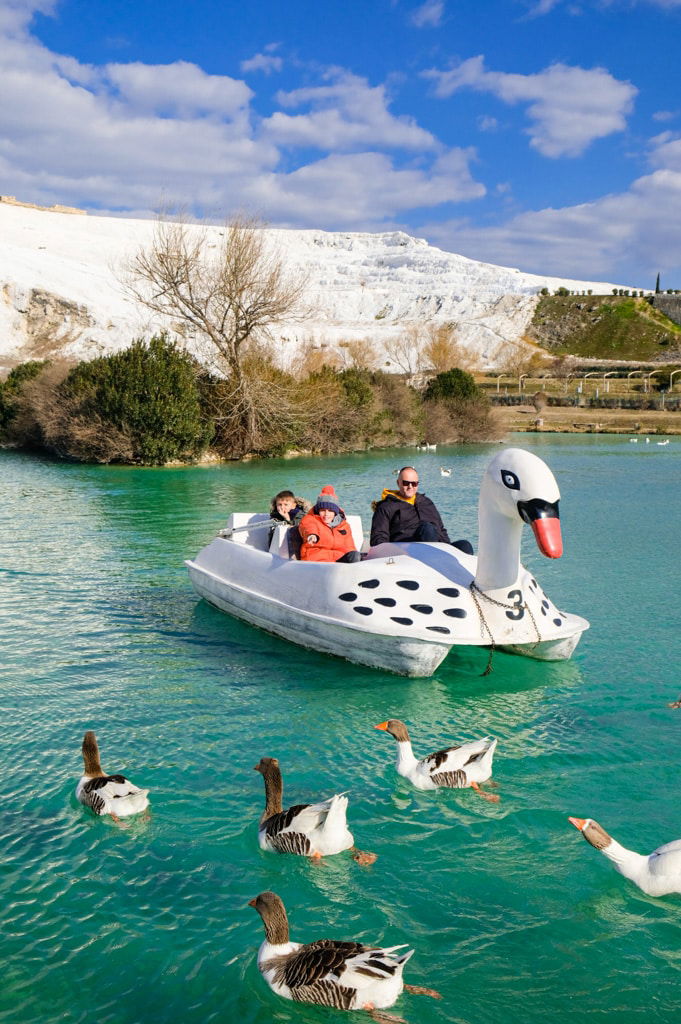
From Istanbul
- By plane: The fastest way to reach Pamukkale from Istanbul is to take a flight to Denizli Çardak Airport, which is approximately 80 kilometers away. From the airport, you can rent a car, use public transport, or hire a private transfer to reach Pamukkale
- By bus: Several companies operate direct, comfortable overnight buses from Istanbul to Denizli. From Denizli, you can take a short taxi or minibus ride to Pamukkale
From Other Main Cities
- By bus: Turkey has an extensive bus network connecting major cities with Pamukkale. Buses have reclining seats and air conditioning and offer a comfortable and affordable option to reach your destination. Having traveled on the long-distance bus network in Turkey several times, I can’t stress how high-quality it is; it’s far better than the buses I used back in Australia!
- By car: Renting a car allows flexibility and exploration along the way. Major cities like Ankara and Izmir are in close proximity to Pamukkale, making the drive a scenic adventure
Visiting Cappadocia
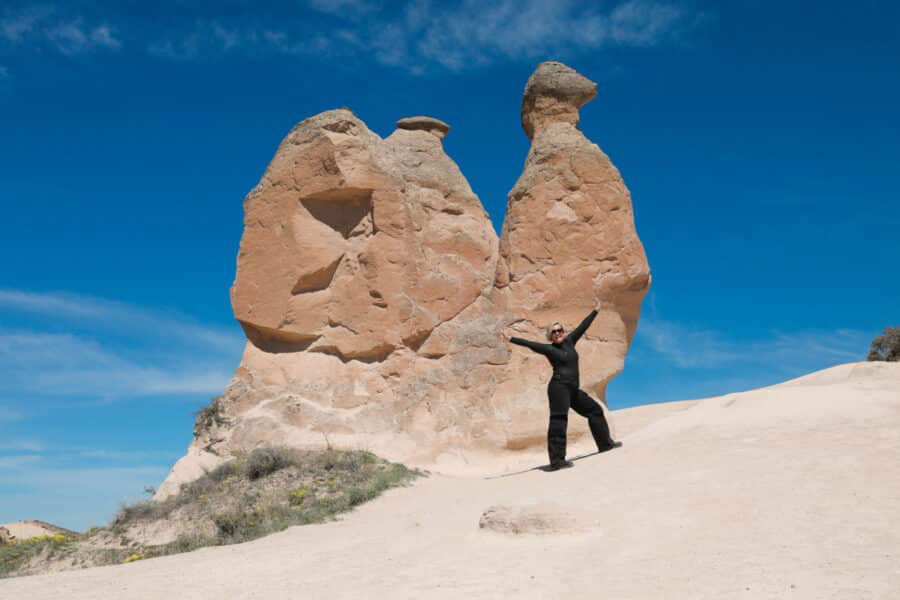
Cappadocia, located in central Turkey, is a region known for its unique geological formations and rich historical heritage. This enchanting destination, often described as a fairy-tale-like landscape, is characterized by its distinctive cone-shaped rock formations, known as fairy chimneys, and its underground cities carved into the soft volcanic rock.
Cappadocia offers visitors a truly extraordinary experience, combining a rich cultural heritage and a sense of adventure. Of course, the main highlight for many is a sunrise hot air balloon ride over the region; it’s something you’ll never forget.
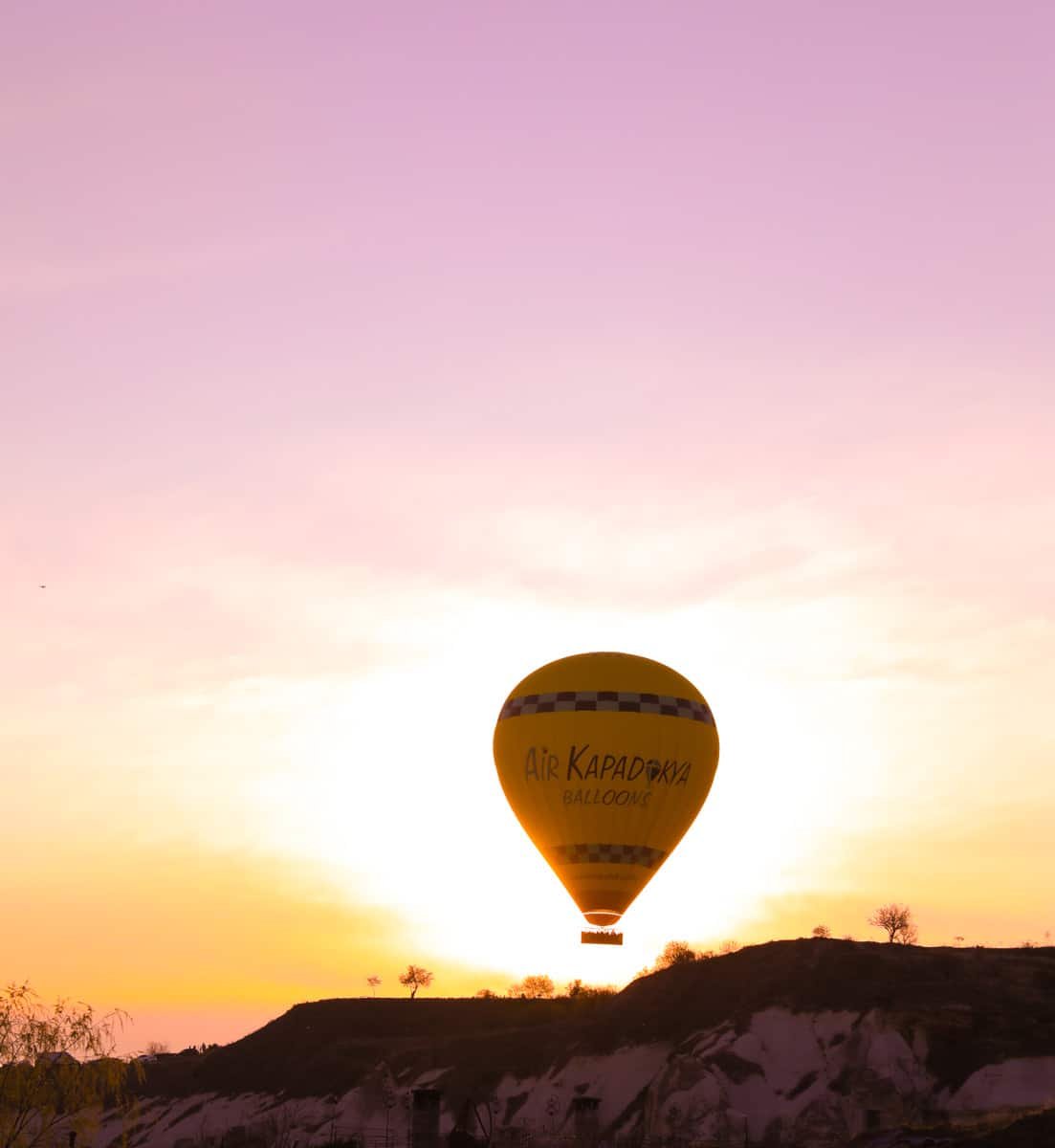
Cappadocia is one of those places that everyone wants to see. Although it seems so far away or hard to get to, it’s surprisingly well-connected to Istanbul, in particular.
Pros And Cons Of Visiting Cappadocia
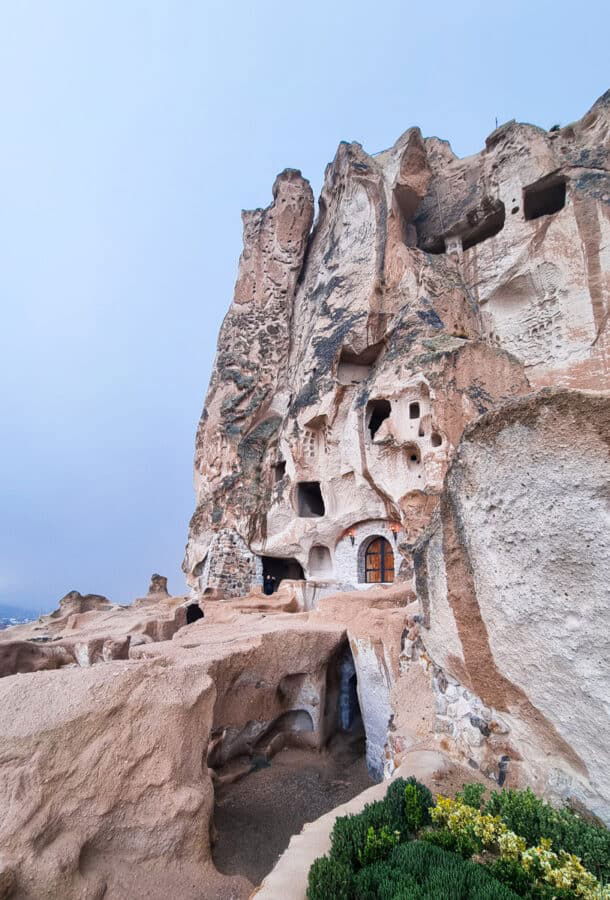
Pros Of Cappadocia
Totally unique
Cappadocia is famous for its extraordinary rock formations and fairy chimneys, which create a mesmerizing and otherworldly atmosphere. The landscapes are like nothing you’ll see anywhere else, and you’ll take so many photos that you won’t know what to do with them all!
Hot air balloon rides
Cappadocia offers one of the best hot air balloon experiences in the world. It allows you to soar above surreal landscapes and witness breathtaking sunrises or sunsets. Even if you’d rather keep your feet on the ground, seeing the balloons take flight is an otherworldly experience in itself.
Rich history and cultural heritage
Cappadocia is steeped in history, with intriguing ancient cave dwellings, churches, and underground cities that offer insights into the region’s fascinating past.
Outdoor activities
Whether you enjoy hiking, horseback riding, or mountain biking, Cappadocia offers numerous opportunities for adventurous outdoor activities among its stunning landscapes.
Delicious Turkish cuisine
Cappadocia is famous for its delicious traditional Turkish dishes, including kebabs, baklava, and Turkish tea. Food lovers will have plenty to enjoy in this region.
Cons Of Cappadocia
Tourist crowds
Due to its popularity, Cappadocia can experience heavy tourist crowds, especially during peak seasons. This may lead to longer queues, crowded attractions, and a more congested atmosphere.
Weather conditions
While Cappadocia is generally pleasant to visit, the weather can be extreme at times, with hot summers and cold winters. It’s recommended to check weather forecasts before planning your trip. It’s very likely to snow during the winter months, which could affect your hot air balloon ride booking if the weather is particularly bad.
Limited public transportation
Cappadocia’s public transportation network can be limited, making it slightly difficult to get around independently. However, organized tours and private transportation options are readily available.
Pricey balloon rides
Although hot air balloon rides are an iconic experience in Cappadocia, they can be quite expensive, and the rates may vary depending on the time of year.
Some attractions might require physical fitness: Exploring certain attractions in Cappadocia, such as climbing steep hills or navigating narrow passages, may require a decent level of physical fitness. It’s essential to consider your abilities before visiting specific sites.
Things To See And Do In Cappadocia
Hot Air Balloon Ride
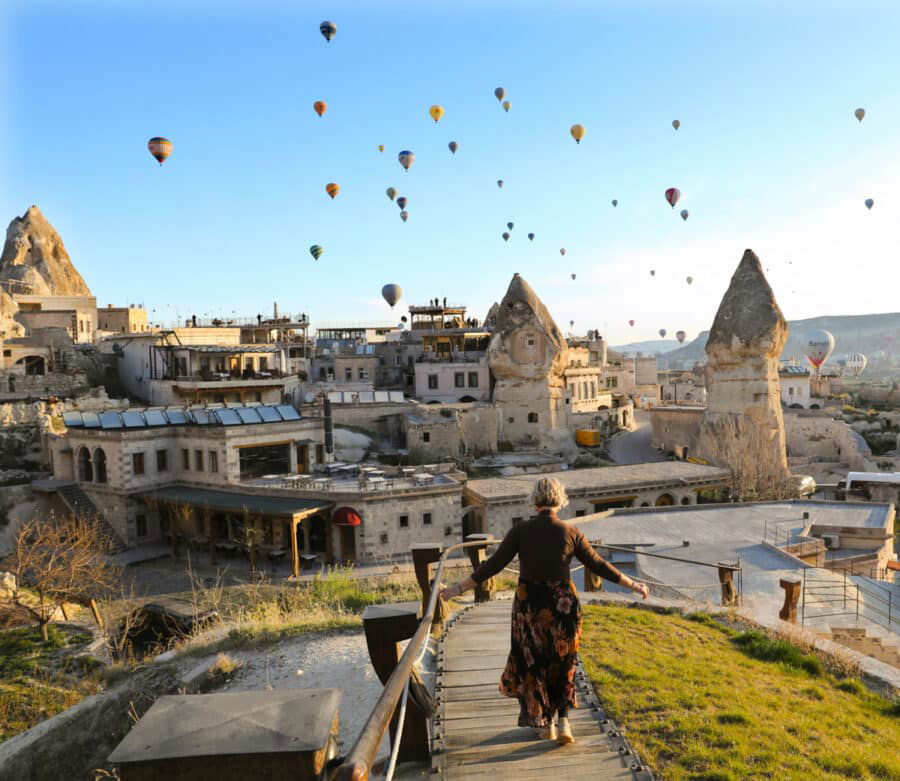 One of the most popular activities in Cappadocia is a hot-air balloon ride at sunrise. This offers an unforgettable experience and stunning aerial views of the landscape.
One of the most popular activities in Cappadocia is a hot-air balloon ride at sunrise. This offers an unforgettable experience and stunning aerial views of the landscape.
Göreme Open Air Museum
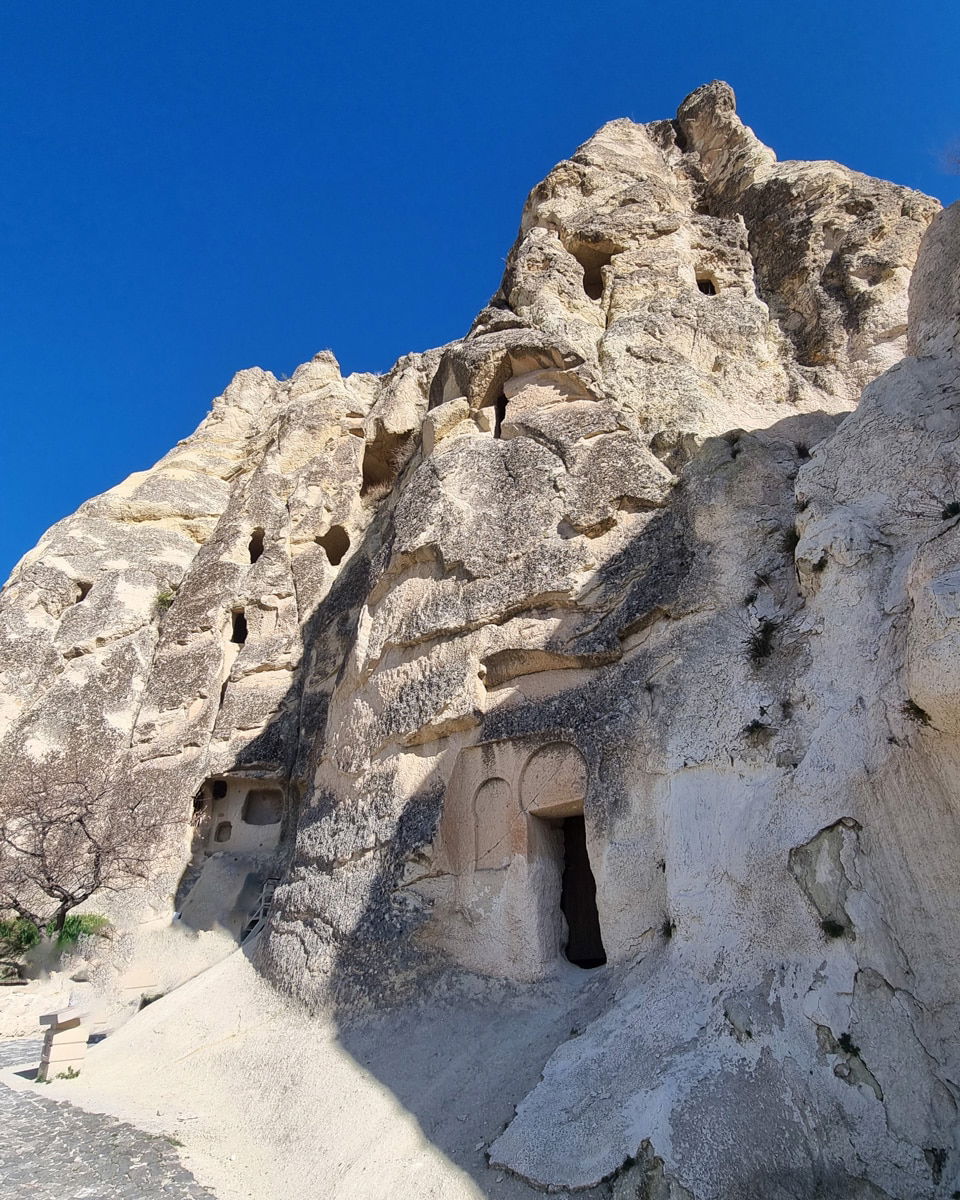
Visit this UNESCO World Heritage Site to explore a vast complex of cave monasteries and Byzantine churches adorned with well-preserved frescoes.
Hiking In Rose Valley
Take a scenic hike through the mesmerizing Rose Valley, named after the pink hues that color the rocks during sunset. Discover hidden cave chapels and hard-to-believe underground city exploration
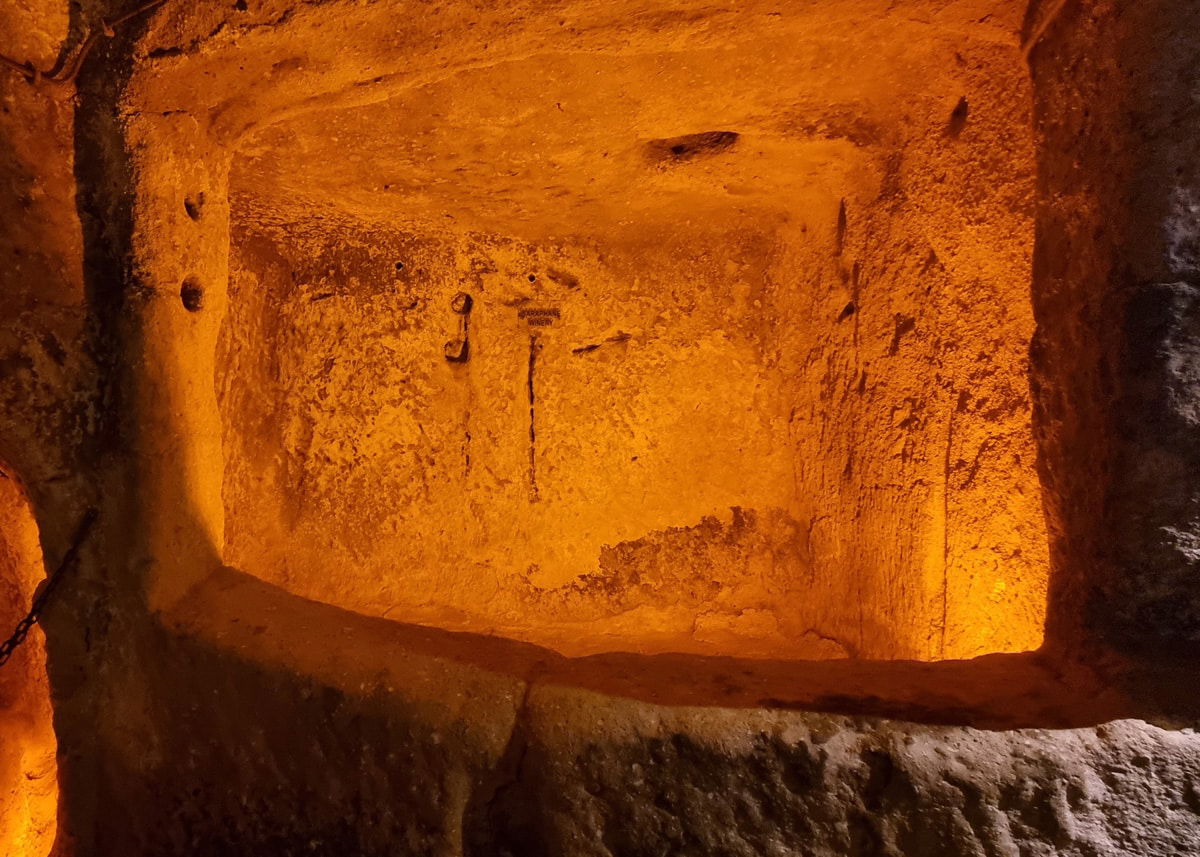
Embark on an underground adventure and explore Kaymakli or Derinkuyu, two of the most well-preserved underground cities in Cappadocia.
Uçhisar Castle
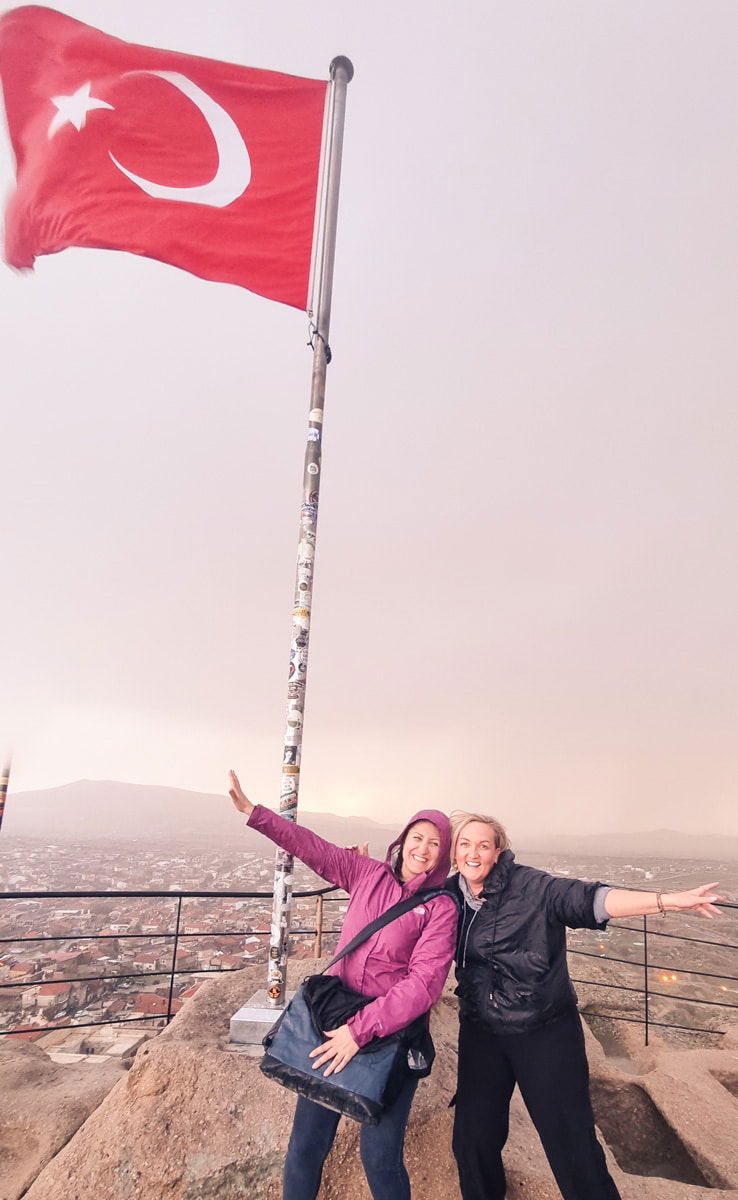
Climb to the top of Uçhisar Castle, a natural rock formation offering panoramic views of the entire Cappadocian region. I climbed up in pouring rain with only two other people in sight. Even then, it was magic.
How To Get To Cappadocia
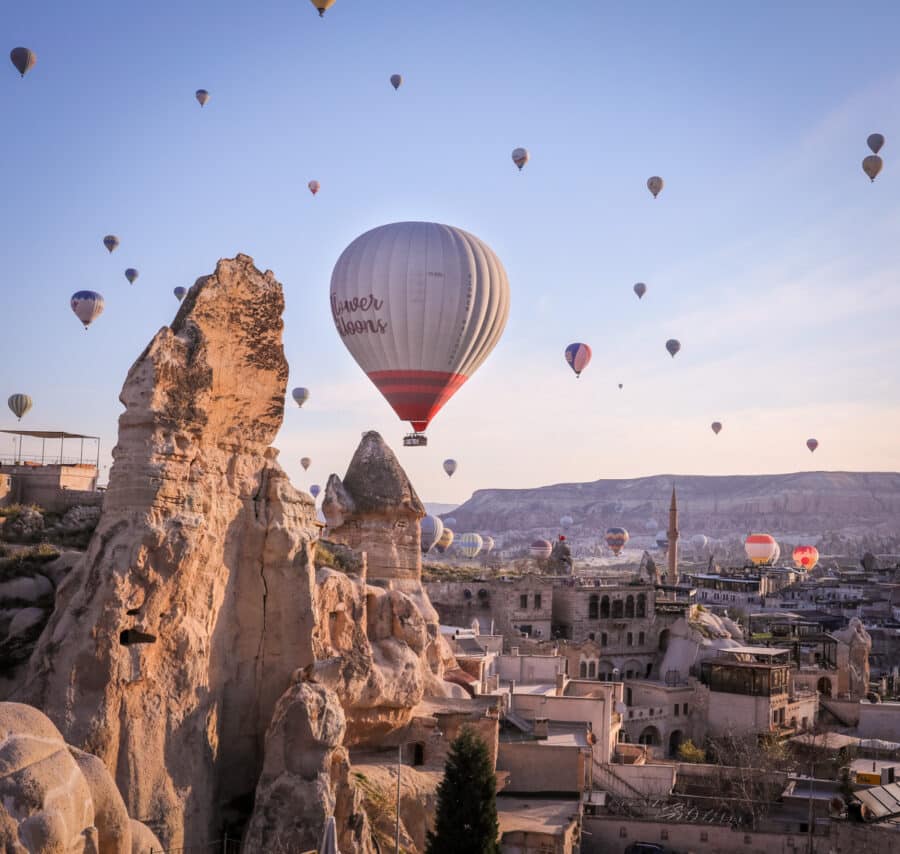
It’s entirely possible to get to Cappadocia from any major city in Turkey, but you will probably need to fly to Istanbul first and catch a connecting flight or bus. For that reason, let’s focus on that option.
From Istanbul:
- By air: The easiest and quickest way to reach Cappadocia from Istanbul is by domestic flight. The nearest airport, Nevşehir Kapadokya Airport, receives flights from Istanbul daily
- By bus: Numerous bus companies provide direct services from Istanbul to Cappadocia. The journey takes approximately 10 hours and offers a comfortable and cost-effective travel option
- By train: Alternatively, you can take an overnight train from Istanbul to Kayseri, which is the nearest major train station to Cappadocia. From there, you can arrange transportation to your final destination within Cappadocia
Move This Adventure To Your Inbox & Get An Instant Freebie

No spam. Unsubscribe at any time.
So, Should You Visit Pamukkale Or Cappadocia? Which Is The Winner?
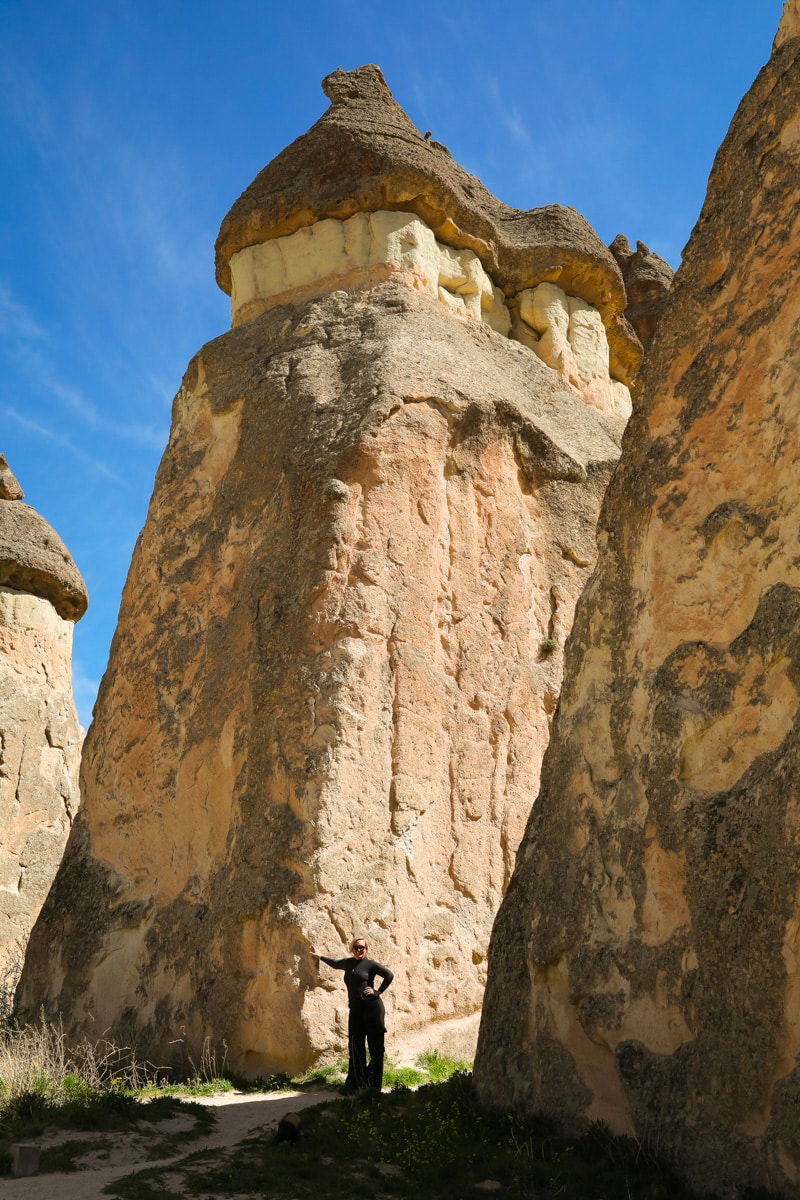
Well, that’s for you to decide in the end!
I’ve given you the information, and now you need to decide which one stands out to you.
Personally, I think both should be on your list, but if you really only have to choose one, I’d go with Cappadocia. It’s a very thin margin to win by, but the crux is that there is a bit more to see and do in Cappadocia compared to Pamukkale.
You can see Pamukkale in a day, two maximum, but Cappadocia can easily fill three days, perhaps even five.
However, Cappadocia and Pamukkale are absolutely stunning destinations that offer unique experiences and jaw-dropping natural wonders. Choosing between the two is a tough decision, but ultimately, it depends on your personal preferences and interests.
If you are a history buff and fascinated by ancient civilizations, then Cappadocia should be at the top of your list. With its iconic rock formations, cave dwellings, and underground cities, Cappadocia provides a glimpse into the region’s rich cultural heritage.
Exploring the fairy chimneys, hiking through the valleys, and taking a hot air balloon ride over the scenic landscape are experiences that you will cherish for a lifetime.
On the contrary, if you are intrigued by natural beauty and seek relaxation, then Pamukkale is the ideal choice for you. The stunning terraces of white mineral-rich travertine pools, formed over thousands of years, create a dreamlike setting. Pamukkale is also home to the ancient Roman city of Hierapolis, which offers a chance to combine relaxing spa-like experiences with glimpses into history.
Ultimately, whether you opt for Cappadocia or Pamukkale, you can’t go wrong. Both offer unparalleled natural wonders and fascinating cultural experiences.
Pamukkale Vs. Cappadocia FAQs
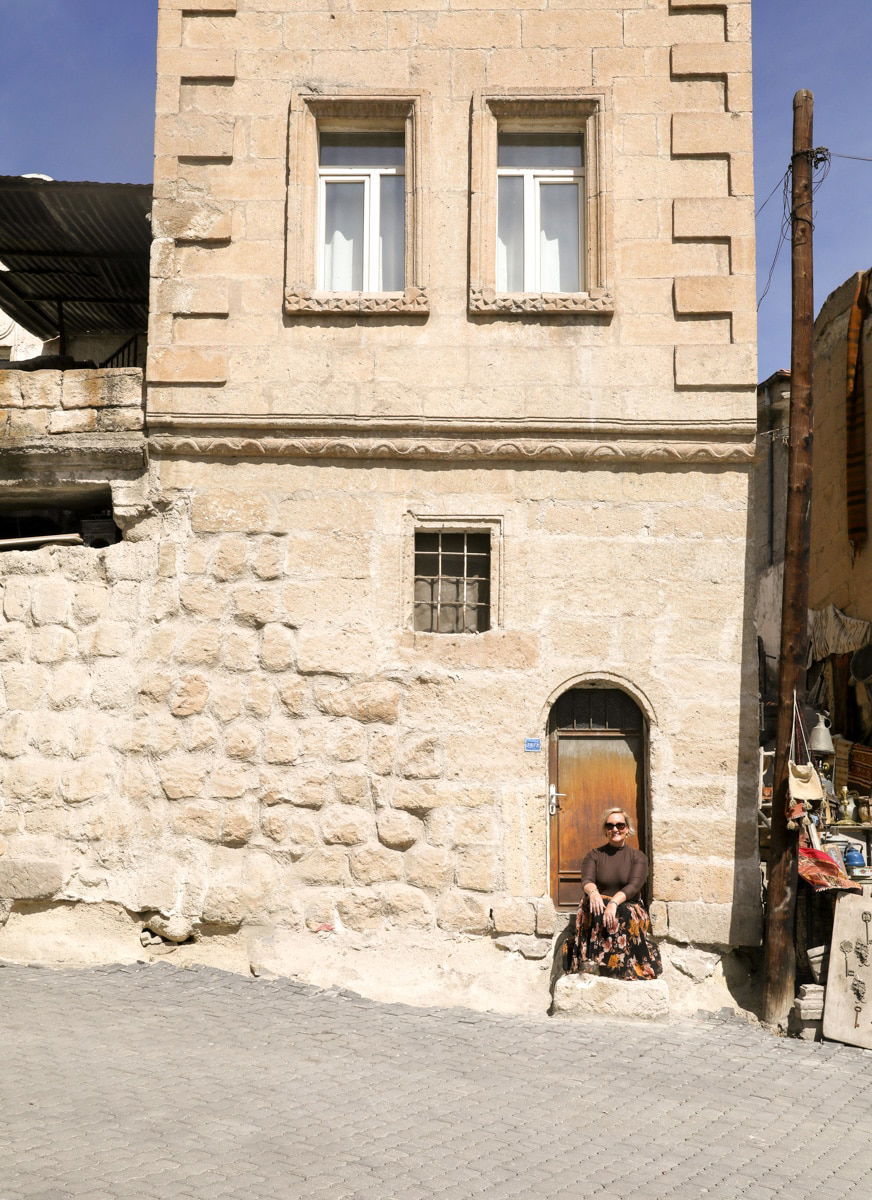
What is Pamukkale known for?
Pamukkale is known for its stunning white travertine terraces filled with thermal waters. These natural terraces form mineral-rich pools believed to have healing properties. Pamukkale is also home to the ancient ruins of Hierapolis, an archaeological site that attracts history enthusiasts.
How can I reach Pamukkale?
Pamukkale is located in southwestern Turkey. The nearest airport is Denizli Cardak Airport (DNZ), which is served by direct flights from Istanbul. From the airport, you can take a shuttle or taxi to Pamukkale, which is about a 1-hour drive.
What is there to do in Pamukkale?
Apart from admiring the travertine terraces, you can take a dip in the terraced pools and experience the natural hot springs. Exploring the ancient city of Hierapolis and its well-preserved ruins is also a must. Additionally, you can enjoy a rejuvenating mud bath, visit the Pamukkale Archaeology Museum, or take a relaxing stroll through the nearby village of Karahayit.
What is unique about Cappadocia?
Cappadocia is famous for its surreal landscapes, a result of ancient volcanic eruptions. It is home to numerous rock formations, known as “fairy chimneys,” which have been carved into cave dwellings, churches, and hotels. Cappadocia is also renowned for its hot-air balloon rides, which offer gobsmaking views of the region at sunrise.
How can I get to Cappadocia?
The nearest airport to Cappadocia is Kayseri Erkilet Airport (ASR), which receives domestic flights from many Turkish cities, including Istanbul. From the airport, you can hire a taxi or take a shuttle to reach Cappadocia, which is about a 1-hour drive away.
What activities can I enjoy in Cappadocia?
Apart from the iconic hot-air balloon rides, you can explore fascinating underground cities such as Derinkuyu and Kaymakli. Hike through the stunning Rose Valley or Love Valley, visit the Göreme Open-Air Museum to see ancient Christian cave churches, or try your hand at pottery making in the town of Avanos.
Is it safe to visit Pamukkale and Cappadocia?
Yes, Pamukkale and Cappadocia are generally safe for travelers. However, it is always recommended to take necessary precautions and follow local guidelines to ensure a safe trip. It’s a good idea to keep valuables secure, stay alert in crowded areas, and consult with local authorities or your travel agency for any specific safety concerns.
So tell us, which wins for you?
- Guide To The Cappadocia Blue Tour
- Package Tours From Istanbul To Cappadocia
- Guide To The Red Valley
- 3-Day Cappadocia Itinerary
- Best Sunset Spots In Cappadocia
- Turkey Museum Pass Options
- Is Pamukkale Worth Visiting?
- Istanbul, Cappadocia & Pamukkale Itinerary
- Guide To Avanos, Cappadocia – Pottery Village
- Izmir Or Bodrum – Which Should You Visit?


Which to Choose Between Cappadocia And Pamukkale for kids?
For a family trip with kids, Cappadocia offers exciting hot air balloon rides, fairy chimney explorations, and underground city adventures, ideal for older children. In contrast, Pamukkale provides gentle activities like paddling in the thermal waters of the travertine terraces, exploring the ancient ruins of Hierapolis, and swimming in Cleopatra’s Pool, making it perfect for younger kids. Choose Cappadocia for adventure and unique landscapes, and Pamukkale for a relaxed experience with beautiful natural sites and historical exploration